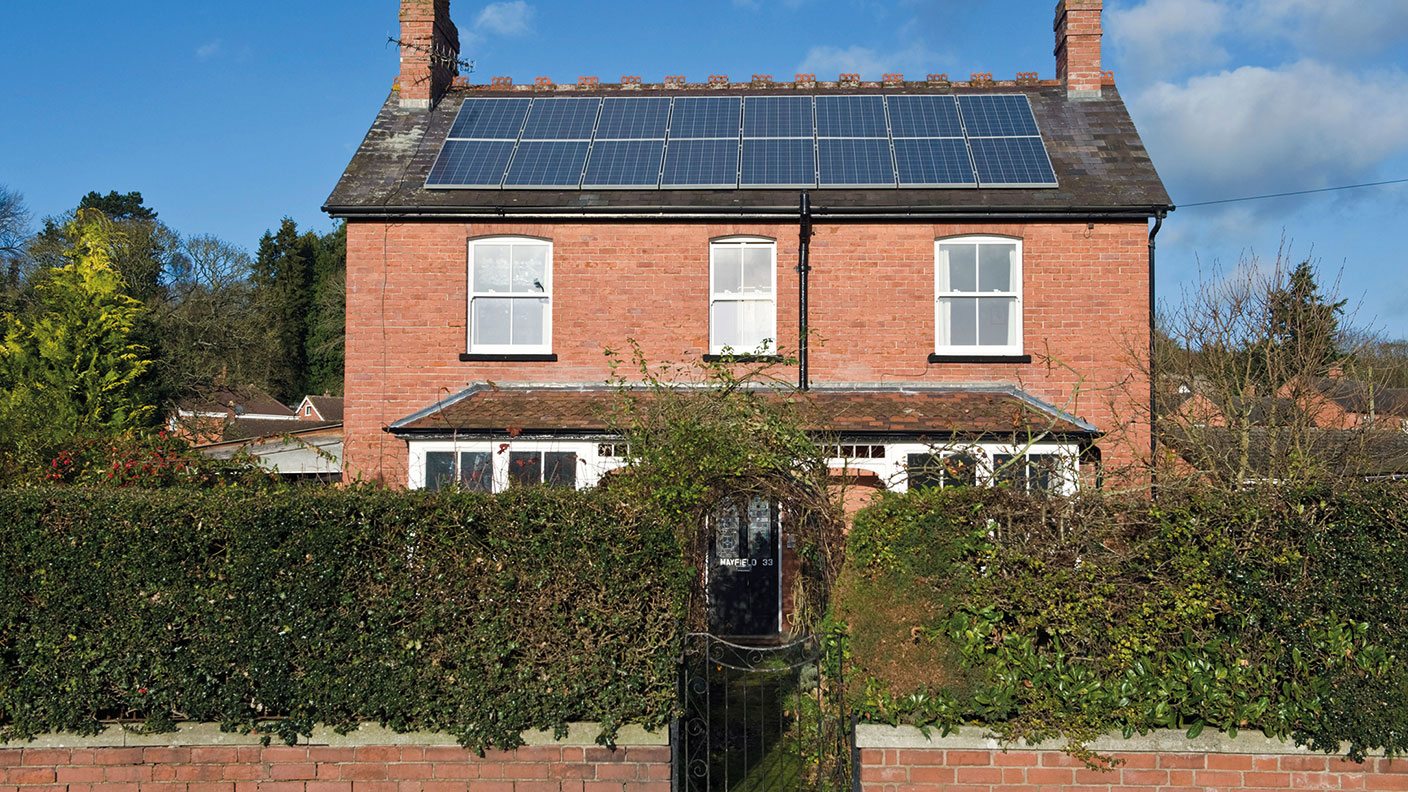How to make your home greener with a government grant
Cut the cost of making your house more environmentally friendly with a Green Home Grant.


If you own a home in England you can now apply for a Green Home Grant to reduce the cost of making your home more environmentally friendly. Anyone planning to apply should be prepared for delays, however.
A survey by the Energy and Climate Intelligence Unit has found that 62% of homeowners are interested, which has “sparked fears that the scheme will be overwhelmed”, says Melissa Lawford in The Daily Telegraph.
The grants are issued in the form of vouchers covering two thirds of the cost of a range of home improvements. The maximum voucher is £5,000 unless you, or someone in your home, receives certain benefits (including income support and universal credit), in which case the maximum value is £10,000.
MoneyWeek
Subscribe to MoneyWeek today and get your first six magazine issues absolutely FREE

Sign up to Money Morning
Don't miss the latest investment and personal finances news, market analysis, plus money-saving tips with our free twice-daily newsletter
Don't miss the latest investment and personal finances news, market analysis, plus money-saving tips with our free twice-daily newsletter
The government is set to issue around 600,000 vouchers worth a total of £2bn. As it is a grant you need never pay the money back, but you must complete the work by 31 March 2021 when the vouchers expire.
The vouchers can be used to part-pay for a variety of measures to make your house greener. These include cavity wall insulation; loft insulation; underfloor insulation; air-source heat pumps; ground-source heat pumps; solar thermal heating and biomass pellet boilers. These are known as the primary measures. So, if you want to install a biomass pellet boiler that costs £7,500 you would get a Green Home Grant for £5,000 and only pay £2,500 yourself.
If you undertake one of these primary jobs, then you can also use the grant for a secondary project such as draught proofing; triple glazing; energy-efficient replacement doors; secondary glazing; hot-water tank insulation; thermostats and heating controls.
“The subsidy for the secondary measure is capped at the value of the grant provided for the primary one,” says Lawford. You can’t use the vouchers to replace work already carried out,but you can use them to top up green measures – adding to your insulation, for example.
When you apply you require a quote from a Green Homes Grant-registered installer. “If the price seems unreasonably high, the scheme administrator may request that you provide another quote,” says Miles Brignall in The Guardian.
Remember, in order to qualify for a grant, you must own a home in England. Landlords can apply, as can anyone with a long leasehold or shared ownership. What’s the best job to get done? Opt for the air-source heat pump, according to Brignall. “This typically costs £10,000-£12,000. Households can use the £5,000 voucher... with the government’s Renewable Heat Incentive payments – combined with the potential savings on your energy bill this could cover the full cost of the new system.”
So what should you watch out for? With so much interest in the scheme, the criminals are on to it too. Conmen are already “sending emails claiming to be about the scheme and using a bogus weblink to steal personal data. Homeowners have also reported being cold-called [and texted] by people claiming to be offering insulation as part of the scheme”. If you want to apply for a Green Home Grant you can find a certified installer via simpleenergyadvice.org.uk/installer-search.
Get the latest financial news, insights and expert analysis from our award-winning MoneyWeek team, to help you understand what really matters when it comes to your finances.
Ruth Jackson-Kirby is a freelance personal finance journalist with 17 years’ experience, writing about everything from savings accounts and credit cards to pensions, property and pet insurance.
Ruth started her career at MoneyWeek after graduating with an MA from the University of St Andrews, and she continues to contribute regular articles to our personal finance section. After leaving MoneyWeek she went on to become deputy editor of Moneywise before becoming a freelance journalist.
Ruth writes regularly for national publications including The Sunday Times, The Times, The Mail on Sunday and Good Housekeeping, among many other titles both online and offline.
-
 Boost for over 100,000 families on Child Benefit as new HMRC payment system rolled out
Boost for over 100,000 families on Child Benefit as new HMRC payment system rolled outThousands of households will no longer have to pay the dreaded High Income Child Benefit Charge through self-assessment
-
 Are you being haunted by the ghost of Christmas past? How festive cutbacks could boost your long-term wealth
Are you being haunted by the ghost of Christmas past? How festive cutbacks could boost your long-term wealthThe average family spends around £1,000 over the Christmas season. Here’s how much you could have gained if you had invested some of the money instead.
-
 Modern Monetary Theory and the return of magical thinking
Modern Monetary Theory and the return of magical thinkingThe Modern Monetary Theory is back in fashion again. How worried should we be?
-
 The coming collapse in the jobs market
The coming collapse in the jobs marketOpinion Once the Employment Bill becomes law, expect a full-scale collapse in hiring, says Matthew Lynn
-
 How pet insurance can help cut the costs of vet bills
How pet insurance can help cut the costs of vet billsYou can temper the expense of vet bills with pet insurance. There are four main types to consider
-
 Rachel Reeves's punishing rise in business rates will crush the British economy
Rachel Reeves's punishing rise in business rates will crush the British economyOpinion By piling more and more stealth taxes onto businesses, the government is repeating exactly the same mistake of its first Budget, says Matthew Lynn
-
 The consequences of the Autumn Budget – and what it means for the UK economy
The consequences of the Autumn Budget – and what it means for the UK economyOpinion A directionless and floundering government has ducked the hard choices at the Autumn Budget, says Simon Wilson
-
 Big Short investor Michael Burry closes hedge fund Scion Capital
Big Short investor Michael Burry closes hedge fund Scion CapitalProfile Michael Burry rightly bet against the US mortgage market before the 2008 crisis. Now he is worried about the AI boom
-
 Why the Waspi women are wrong
Why the Waspi women are wrongOpinion Compensation for the Waspi women would mean using an unaffordable sledgehammer to crack a nut, says David Prosser
-
 Why UK stocks are set to boom
Why UK stocks are set to boomOpinion Despite Labour, there is scope for UK stocks to make more gains in the years ahead, says Max King
